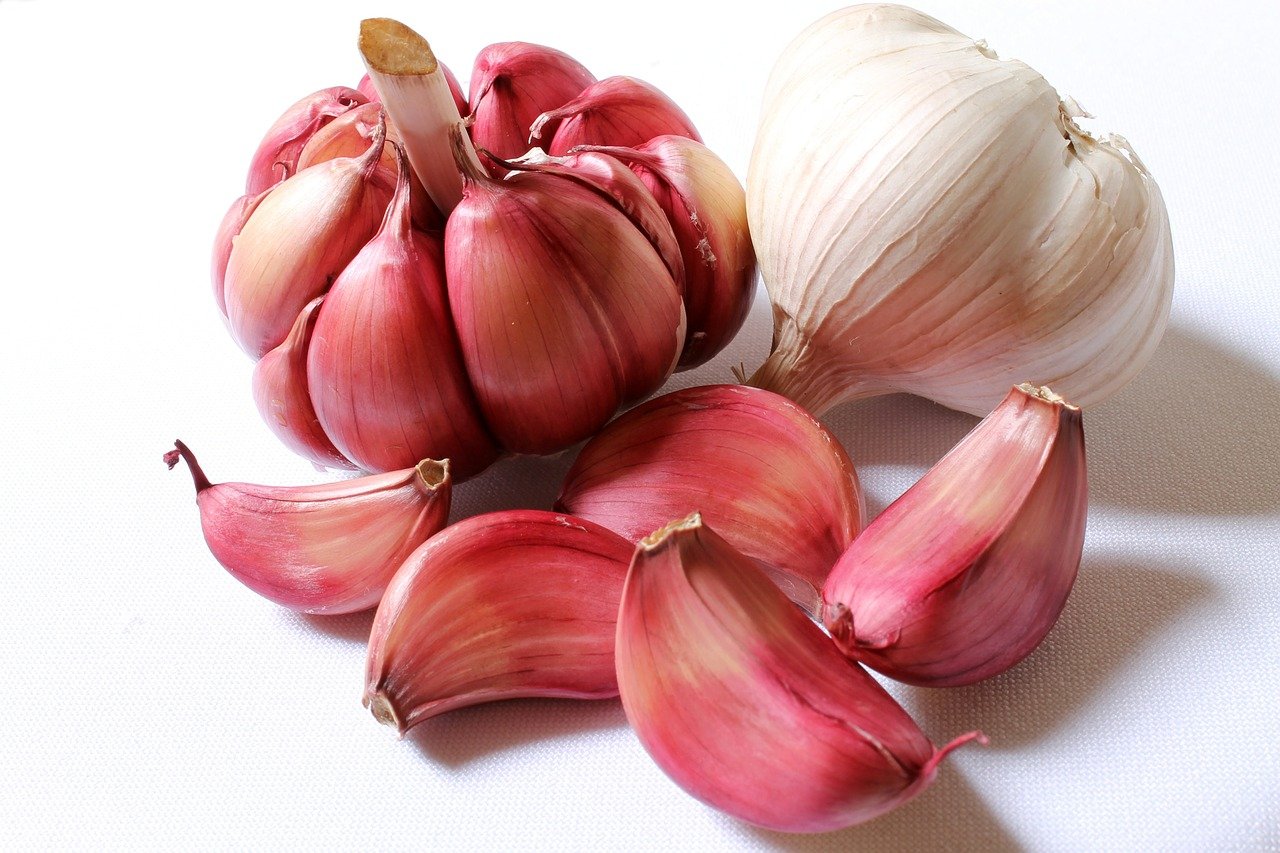Intense in flavor and easy-to-grow, garlic is considered the “stinking rose” of the culinary world. Garlic has a multitude of uses, from insect repellent and home remedies, to adding flavor to dishes. From the onion genus, Allium, garlic’s relatives include shallots, leeks, and chives. Learn more about this aromatic and yummy vegetable below.
History of Garlic
Garlic has been used in foods, folk medicines, and even as a form of money for more than 5,000 years. Whether seasoning dishes or swearing off vampires, garlic has made its mark in culinary history.
Native to Central Asia, garlic had long been a staple in Asia, Europe, Africa, and the Mediterranean. It wasn’t until the 1940s that garlic was adapted as a key ingredient for recipes in the United States.
Today, this fragrant, potent bulb has its own holiday all about celebrating its flavor, versatility, and medicinal qualities. National Garlic Day is held every April 19th and is celebrated by cooking a meal with garlic or attending one of the many National Garlic Day Festivals found around the country.
How to Grow Garlic
Growing garlic is quite simple. From planting to caring and harvesting, garlic is a plentiful crop. It experiences very few issues with pests and disease. There are two main types of garlic:
Hardneck: Very hardy and great for cold weather climates, this type of garlic produces flower stems called scapes that can be removed and eaten. The plant itself grows one ring of cloves around the stem, as well. However, it does not store well or as long as others, and the flavor is milder.
Softneck: Necks stay soft after harvest (these are the ones that you will see braided together). Additionally, this type of garlic is best in warm climates, not as winter-hardy, has a very intense flavor, and grows bigger bulbs.
Great-headed garlic, also known as elephant garlic, is somewhat like a hardneck, however, it’s not a true garlic. Although similar to hardnecks, the flavor is mild and more akin to a leek or onion. This variety will take about 90 days to harvest.
When to Plant Garlic
Garlic is generally planted during the fall season, between September and November. Garlic roots like to develop in the ground during fall and winter before the ground freezes. As early spring approaches, they begin to produce foliage, and by summer, they are ready to harvest.
You can plant in the spring, especially if you live where there is a long growing season. If you live in the Southern or Southwestern part of the U.S., you can plant garlic anytime between fall and spring.
Preparing a Planting Site
Choose a site that checks off the following:
- Choose a spot that gets 6 to 8 hours of sun.
- Make sure the soil is amended with compost and appropriate nutrients.
- If planting in the spring, be sure that the ground has thawed.
- You can plant in-ground or in raised beds, but make sure there is good drainage.
- Mulch the beds with hay after the ground freezes if planting in fall or winter.
Cloves of garlic from a seed company or nursery are best. Planting cloves from the grocery store is generally not a good idea because they may be of a variety not suitable for your region. Also, they have been modified to make their shelf life longer, which in turn makes them harder to grow.
You will want to choose large, healthy cloves; the bigger, the better.
Planting Your Garlic
- To plant, break apart the clove.
- Leaving the husk on, place individual cloves 2 to 4 inches apart upright, and 2 inches deep.
- Placing them upright means that the wide root side will be facing down and the pointed end facing up.
Caring for Your Garlic Plant – MFW
Mulching will be key to those planting in northern states. However, mulch will need to be removed by spring after the threat of frost has passed. In spring, when foliage appears, cut off any flower shoots that appear (these flower shoots will reduce the size of the bulb).
Fertilization will occur during early spring and again during early May (in most regions). Since garlic is a heavy-feeding vegetable, it requires nitrogen. If you see leaves starting to yellow, add more.
Watering garlic is easy because it requires very little. When first planting, there is no need to water. During bulbing, mid-May through June, water every 3 to 5 days. If those months are dry, water to a depth of 2 feet every 8 to 10 days. As the middle of June approaches, water them less.
As previously mentioned, garlic does not experience pests and diseases too much, especially since it’s a natural pest repellent. The one concern that affects garlic is white rot. White rot is a fungus that likes to attack in cooler weather. Since spores can live in the soil for years, there is not much to do to remedy it. White rot will affect the roots and base of the leaves.
Harvesting Your Garlic Bulbs
If you planted your garlic in the fall, then harvesting will be done in late June to August. As for southern climates, it will depend on the date you planted.
Look for yellow foliage—that’s your clue. When the tops begin to yellow and fall over (but before they dry out), that’s when it is time to harvest.
To note, before unearthing your whole crop, pull up one bulb to sample. Garlic that is ready to be dug up will have plump cloves, and the husk will be thick, papery, and dry. If a bulb is pulled up too early, the husk will disintegrate from being too thin. Garlic bulbs left too long in the ground often split apart.
When harvesting, be careful not to pull at them or hit them with your garden shovel. Lift carefully and brush or shake the dirt gently from the bulbs. Garlic should be hung up and dried after harvest. It will need to be hung in a cool, dry space so that the roots and husks can dry completely. As the bulbs dry, the flavor will increase. If you want to grow garlic the next season, be sure to set aside cloves.
The Nutritional Benefits of Garlic
Garlic has numerous nutritional benefits such as:
- Immunity boosting
- Great for the heart
- Antifungal
- Reduces risk of cancer
- Great for mental health
Garlic has long since been highly-regarded throughout the world and throughout history for both its medicinal and culinary value. From Hippocrates, Pliny, and Aristotle, using garlic for therapeutic purposes was encouraged.
Although today it is used as a seasoning, raw or cooked garlic takes second place as the most utilized health supplement. Why? Well, that’s because garlic contains sulfur-containing compounds, high amounts of trace minerals, and enzymes. Plus, it has been shown to have properties that are:
- Anti-viral
- Anti-bacterial
- Anti-fungal
- Antioxidant
Diseases such as Alzheimer’s, cancer, cardiovascular disease, atherosclerosis, strokes, hypertension, thrombosis, and hyperlipidemia could be prevented with the regular intake of garlic. Research also shows that garlic helps maintain diabetes, dermatologic issues, stress, osteoporosis, and drug toxicity.
At Snap Kitchen, we incorporate garlic in a number of our recipes like our baked ziti, butter chicken on basmati rice pilaf, and more. Got a lot on your plate? Take dinner off of it—we’ll take care of it for you.





Leave a Reply
No Comments